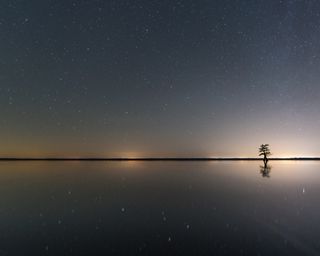How much carbon was in the atmosphere when you were born?
The Results
In YEARVAR, there were
YEARPPM ppm
carbon in the atmosphere.
Today, there are
416.43 ppm
carbon in the atmosphere.
That's an increase of
PPMCALC ppm
during your lifetime thus far.
These levels are speeding up. As a comparison, carbon only increased
YEARCALC ppm
during the USERAGE years before your birth.
Carbon dioxide in the atmosphere is measured in parts per million (ppm). Yearly average carbon figures dating back to 1958 come from Mauna Loa (Hawaii) and the South Pole. Carbon figures before 1958 come from measurements of ice core samples in Antarctica.
Learn more about how the results were calculated.

If we split our atmosphere today into 1 million parts, 416 of them would be made of carbon dioxide. And while 416 parts per million (ppm) might not seem like a lot, it’s the most we’ve seen in at least 3 million years. All of this extra carbon dioxide is warming up the planet.
These levels have sped up during your lifetime, but don’t take it personally: that fact is true for everyone alive today. But you know what else can happen in your lifetime? We can take the most important steps to reduce carbon emissions and give our planet the future that is least impacted.
It will take collective action. It will take new technologies. And it will take very old technology—like nature.
